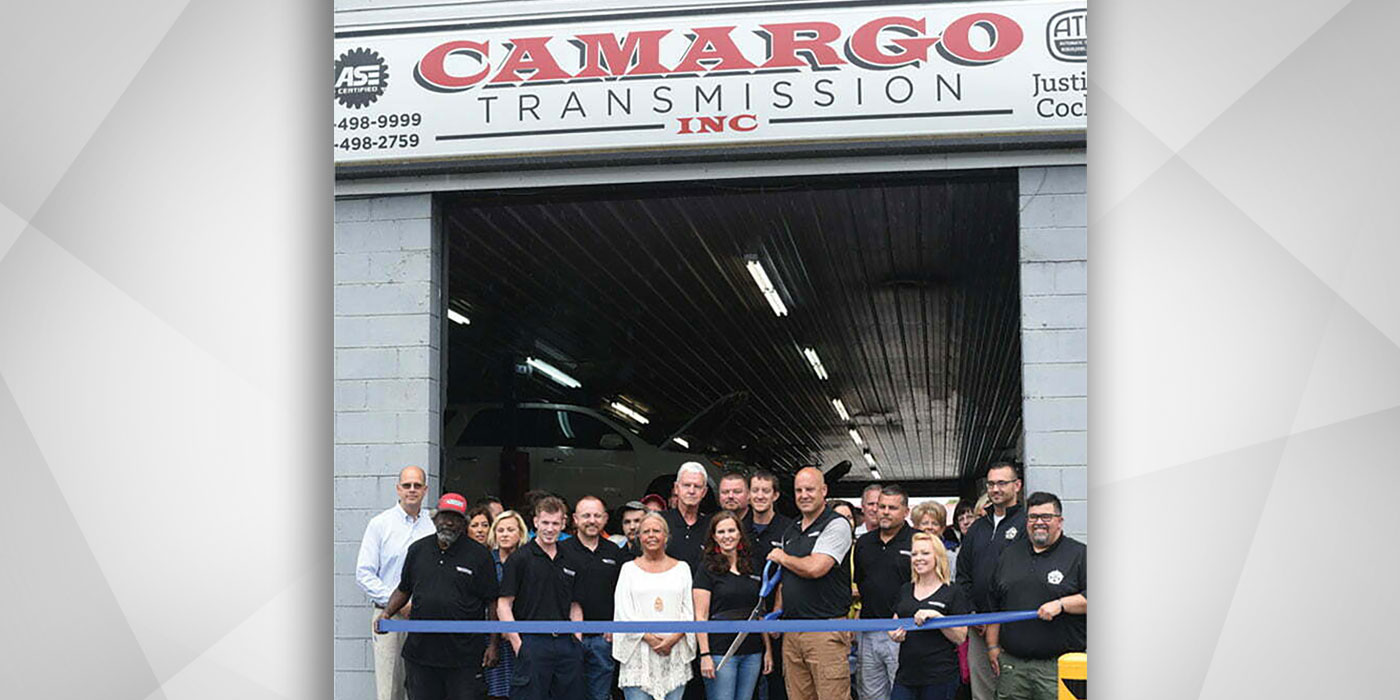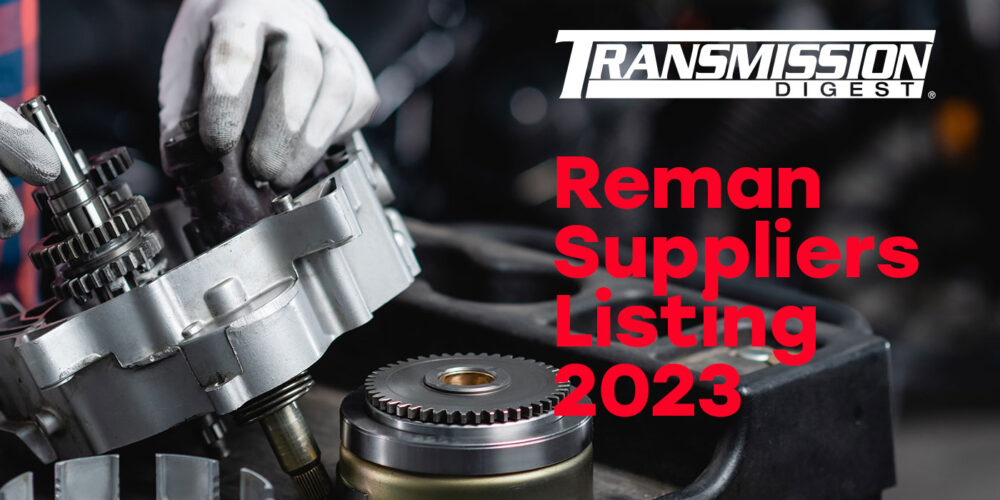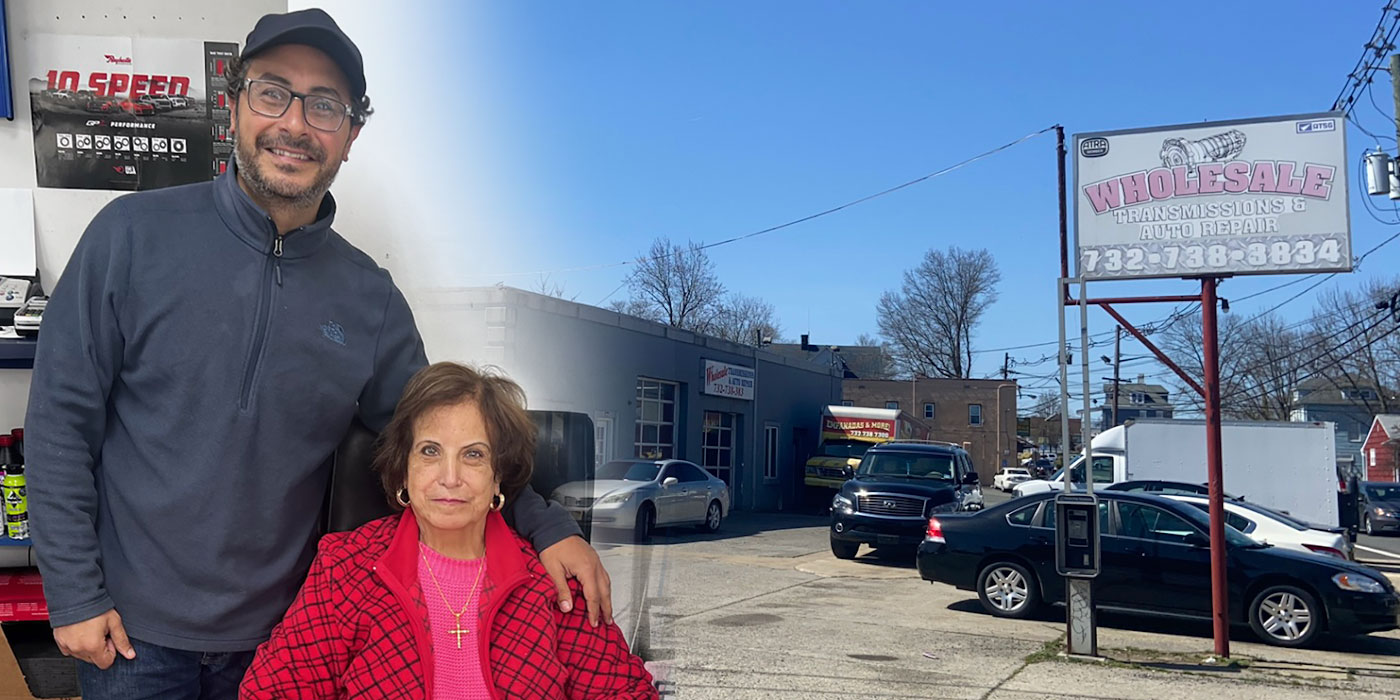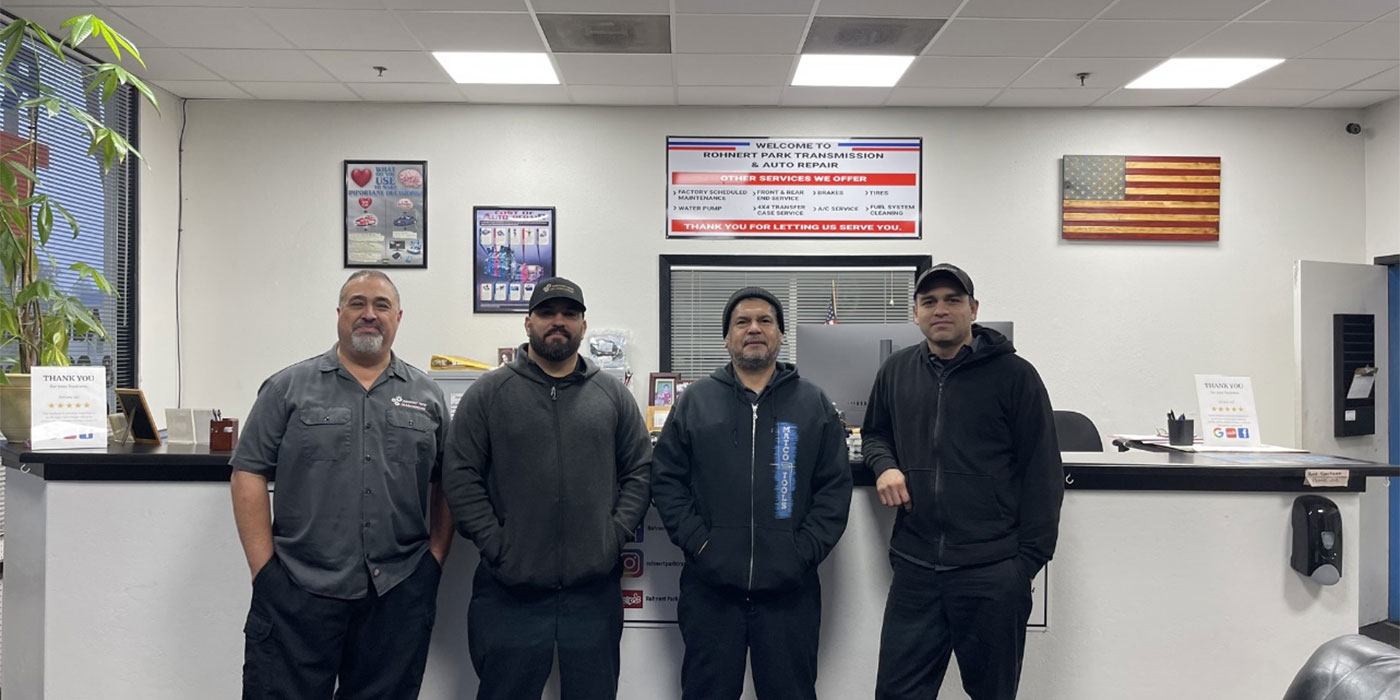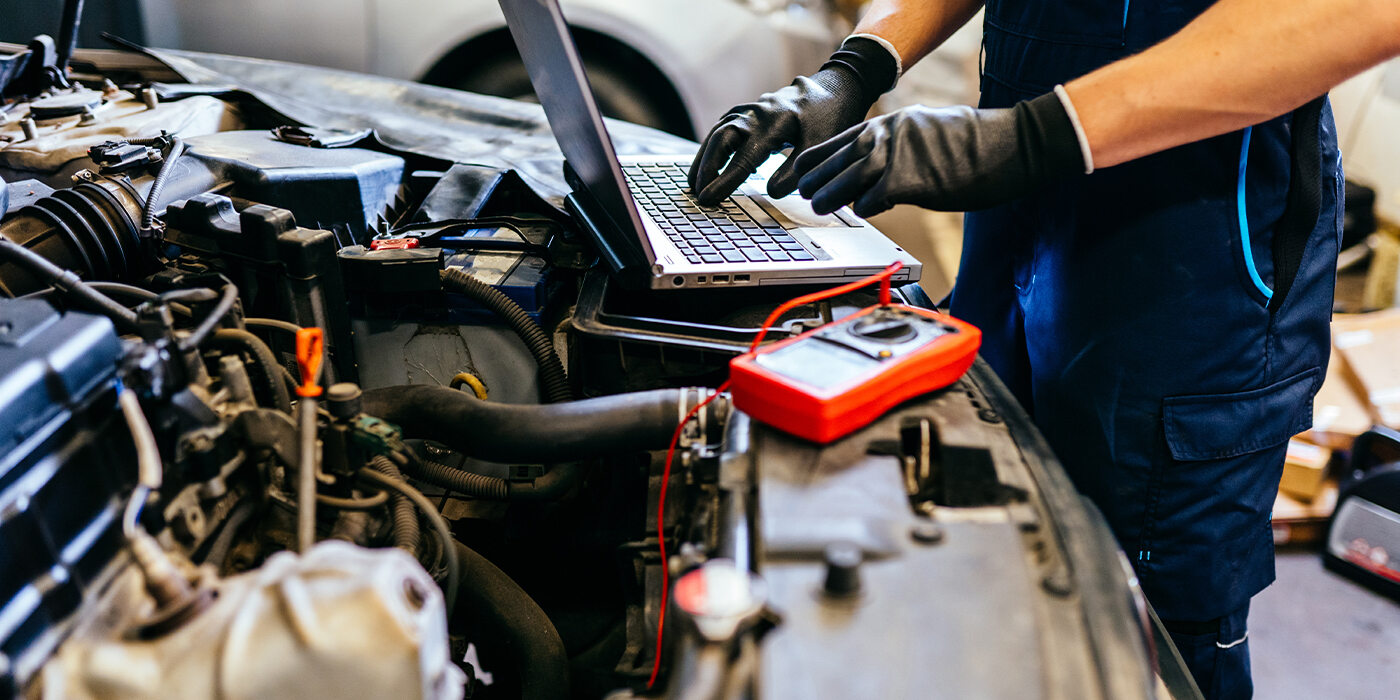
It’s Your Business
- Subject: Leading by example as a business owner
- Essential Reading: Shop Owner
- Author: Terry Greenhut, Transmission Digest Business Editor
I was 25 years old and still single at the time, with nothing better to do with my money or my free time than learn how to fly. I went up almost every afternoon and weekends. In a year or so I finally got a private pilot’s license.
As with everything else I do, I really got into it. I even joined the AOPA (Aircraft Owners and Pilots Association). The organization had a monthly magazine that I read from cover to cover looking for tips on how to be a better pilot. In every issue there was an article about a crash. Readers were supposed to judge whether the accident was due to some mechanical failure, weather-related cause or pilot error.
It turned out that about 90% of accidents resulted from pilot error. Even some of the weather-related crashes could have been avoided if the pilots had followed proper procedure in checking the weather beforehand or not taking off when the weather was too bad. There were even incidents in which planes ran out of fuel because pilots, who did not anticipate weather problems, thought they had enough to get where they were going.
What it proves is that knowing what you shouldn’t be doing isn’t always going to make you stop doing it and that, similarly, knowing what’s right to do isn’t going to make you start doing that, either.
Case in point: I recently visited a transmission shop that had such a lack of business, when I pulled up I thought the place was closed (maybe permanently). I was able to park in any spot I wanted because there were no other cars in the lot.
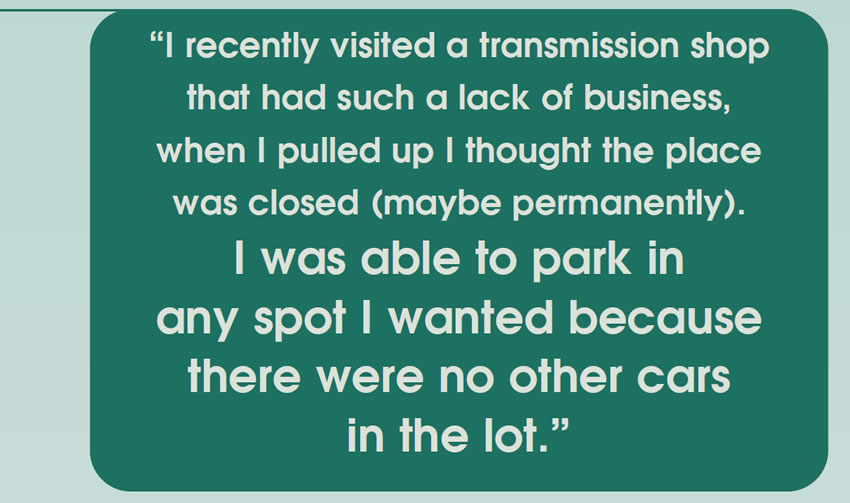
As I walked through the office door I first noticed how shabby everything looked. The floors hadn’t been swept in weeks or maybe months. There was an overflowing trash can near the front door. The furniture looked like something a homeless family threw out because it wasn’t good enough for them. There was a very small-screen television turned on in the so-called “waiting area.” The sound was blasting, and yet there was nobody there watching it.
The manager made a half-hearted attempt at saying hello to me. I looked him up and down, and the first thing that popped into my mind was, “If I were a customer, there is no way I would buy a transmission from this guy.” He was wearing sneakers with the laces untied; a dark-blue winter work coat that was at least two sizes larger than he was, with the logo of the last shop where he had worked plastered across the back; and a cap that didn’t have his shop’s name on it but that of the parts house down the street. So rather than advertising his own business, he was giving free advertising to his old boss and his competitor, the parts store. And don’t think for one second that the parts store is not your competitor. Anybody who will sell parts to a shade-tree do-it-yourselfer for the same price he sells them to you is your competition, not your friend.
Looking around for someone to blame for what I’d seen so far, it didn’t take me long to find him. The door to his office was open. He sat there in his Hawaiian shirt, his back to the door and to me. Peering over his shoulder, I could see what was on his computer screen. It was a version of solitaire. It was 2 o’clock in the afternoon – not lunch time, not break time – and there was the owner of a shop with no business, three mechanics and a manager standing around with nothing to do, playing solitaire.
Let’s call this a case of pilot error (to be kind), the pilot being the owner of the shop. If I weren’t being kind I’d call it owner stupidity. Here sits a man who is responsible for the livelihood of his family and the families of all his employees, playing solitaire in the middle of the day in plain sight of anyone who might wander in. It’s a little like Nero fiddling while Rome burned.
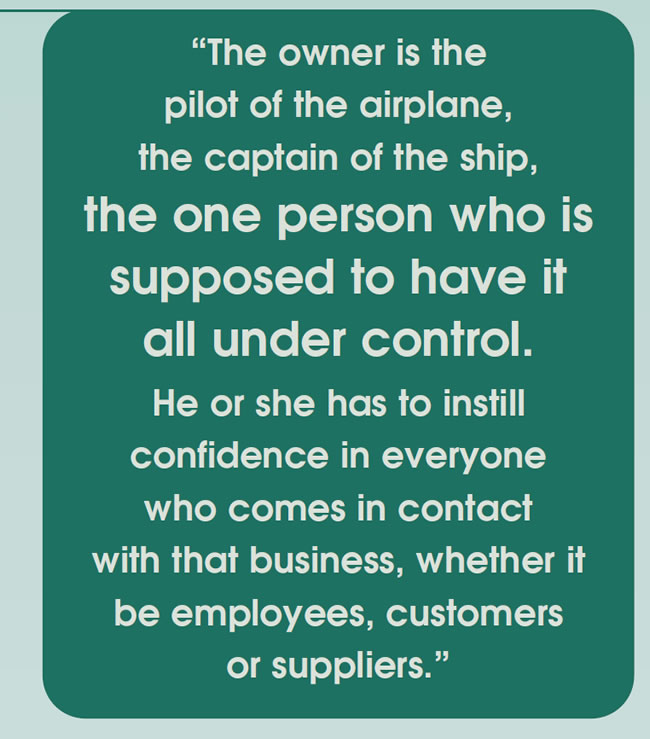
If you were an employee in such a shop – and by this time you’d be a bit wary about how long you would be getting a paycheck – how would you feel about the owner sitting around playing games when he should be out finding business?
What if you were a supplier to whom the shop owed money? What would you think if you walked into this dirty, empty shop, with a “shlub” (that’s New York for unkempt) of a manager and saw the owner doing less than nothing to help himself or the business? Would you feel confident that you would ever get your money? Would you be inclined to issue any more credit?
The owner is the pilot of the airplane, the captain of the ship, the one person who is supposed to have it all under control. He or she has to instill confidence in everyone who comes in contact with that business, whether it be employees, customers or suppliers. It doesn’t even matter whether the confidence is real or is one of those “fake it till you make it” kind of deals. The owner has to make everybody a believer.
When an owner sits around wasting time, energy and resources, the message he projects is, “I don’t have the foggiest notion how to fix this thing” or “I’ve given up.” Both, of course, are great confidence builders that command loyalty from those around him, especially the banker or the landlord to whom he probably also owes money.
Why does this shop not have business? Why is it dirty, with a manager who probably shouldn’t be one? “Cause there ain’t nobody flyin’ the plane.” The owner is obviously not in control, nor is he supplying any leadership. Unless he’s got it on automatic pilot, which he doesn’t, it won’t be long before it goes into a tailspin and crashes.
Can this ship be righted? Sure, it can – if the owner hasn’t yet alienated too many important people, but he will have to undergo a complete makeover.
First and foremost, he must lead by example. He needs to put on a logo shirt every day with a pair of slacks, not jeans. Nothing says unprofessional more than a faded pair of dungarees and sneakers. He cannot tolerate the wearing of other logos in his shop. If that means buying hats or shirts he’ll need to do it. He has to insist that the shop and, especially, the office/waiting room and the bathroom be clean. He has to teach his manager and everyone else the proper way to greet customers with a smile, a handshake and an interested, caring attitude. He has to go out and drum up business. That should be his main function as an owner, to build the business. There is usually no one in the shop who can do a better job of outside sales than the owner.
The process of changing everyone’s habits will take 21 days of intense supervision. That means harping on everyone when they fall back, and people will fall back. They will take the path of least resistance, and change is always hard, so supervision must be present.
One more thing the owner will need to do is turn his desk around. You never want to sit with your back to a door. You don’t know who is going to sneak up on you. No one should know your business. When they can see your computer screen, they know more than they should, no matter what’s on it. Set the computer to go into “standby mode” or “screensaver” within a few minutes of inactivity. Make it require a password that only you know before it will again become active.
The owner/pilot is also the cheerleader. If you’ve ever seen a captain do a walkthrough on an airliner, he always sports a big smile and tells the passengers that everything is OK, even if it isn’t all that great (no problem – just a little crack in the tail section; we’ll be fine).
Take command of your business and there will be much less chance of “pilot error.”

Visit www.TerryGreenhut.com.




